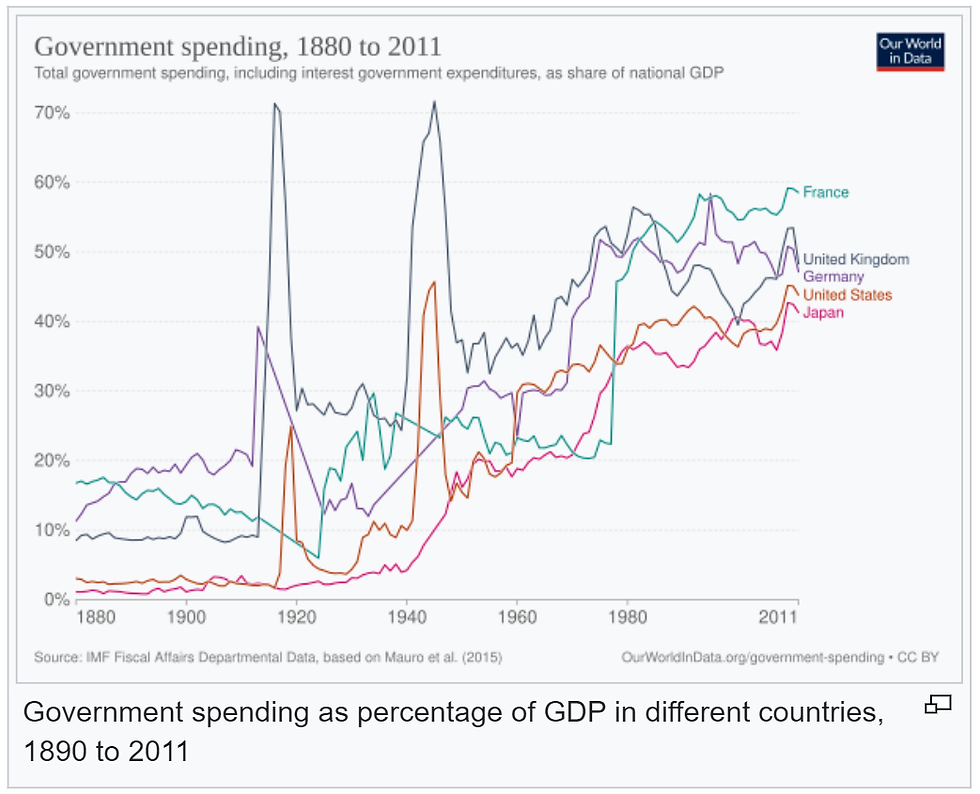What does the Government spend on?
- econunitedteam
- Aug 16, 2024
- 2 min read
Have you ever wondered what your country’s government spends its money earned from your taxes on?
Government spending refers to the money spent by the public sector on the acquisition of goods and provision of services such as education, social protection, and defense. Also known as government expenditure includes all government consumption, investment and transfer payments. Transfer payments are a payment for money, usually from the government, for which there are no goods or services exchanged. These include social security benefits, unemployment welfare benefits, insurance benefits, etc. The total amount of money that the government spends each year is called Total Managed Expenditure (TME). The main things governments spend on are:
Healthcare
Social security (pensioners)
Social security (working-age & children)
Education
Net debt interest
Defense
Transport
Public order and safety
Long term care
Housing and community amenities
Overseas aid
Others
Government spending are of two types:
Government Final Consumption Expenditure: the acquisition by governments of goods and services for current use, to directly satisfy the individual or collective needs of the community.
Government Investment: acquisition of goods and services intended to create future benefits, such as infrastructure investment or research spending.
These two types of government spending, on final consumption and on gross capital formation, together constitute one of the major components of gross domestic product.
Government spending differs from country-to-country. Government spending varies by country due to differences in economic development, political priorities, demographics, debt levels, economic structure, cultural values, and international obligations. Wealthier nations often spend more on social services, while developing countries focus on basic needs. Political ideologies shape spending priorities, and aging populations may lead to higher healthcare and pension costs. Debt levels influence how much is spent on social programs versus debt servicing. Cultural norms and international commitments also play a role in shaping spending patterns. For example, below are the top 10 countries that spend the highest on national defense:

[Source: wikipedia]

[Source: wikipedia]
A common question usually asked is: could there be a chance that the government decreases its spending? Yes! Absolutely! This is done to combat inflation. Contractionary fiscal policy is implemented in which government spending decreases and taxes increase. This is done to slow the economy a bit during high times of inflation, to decrease spending. Many economists suggest that monetary policy, enacted by the Federal Reserve, is more effective for reducing inflation.
Another questions frequently asked is: what does the government not spend on?
State and local general expenditures include spending on schools, health care services, and general administration (among other activities in the general government sector) but exclude government-run liquor stores, utilities, and insurance trusts, which are accounted for separately in the census.








Comments